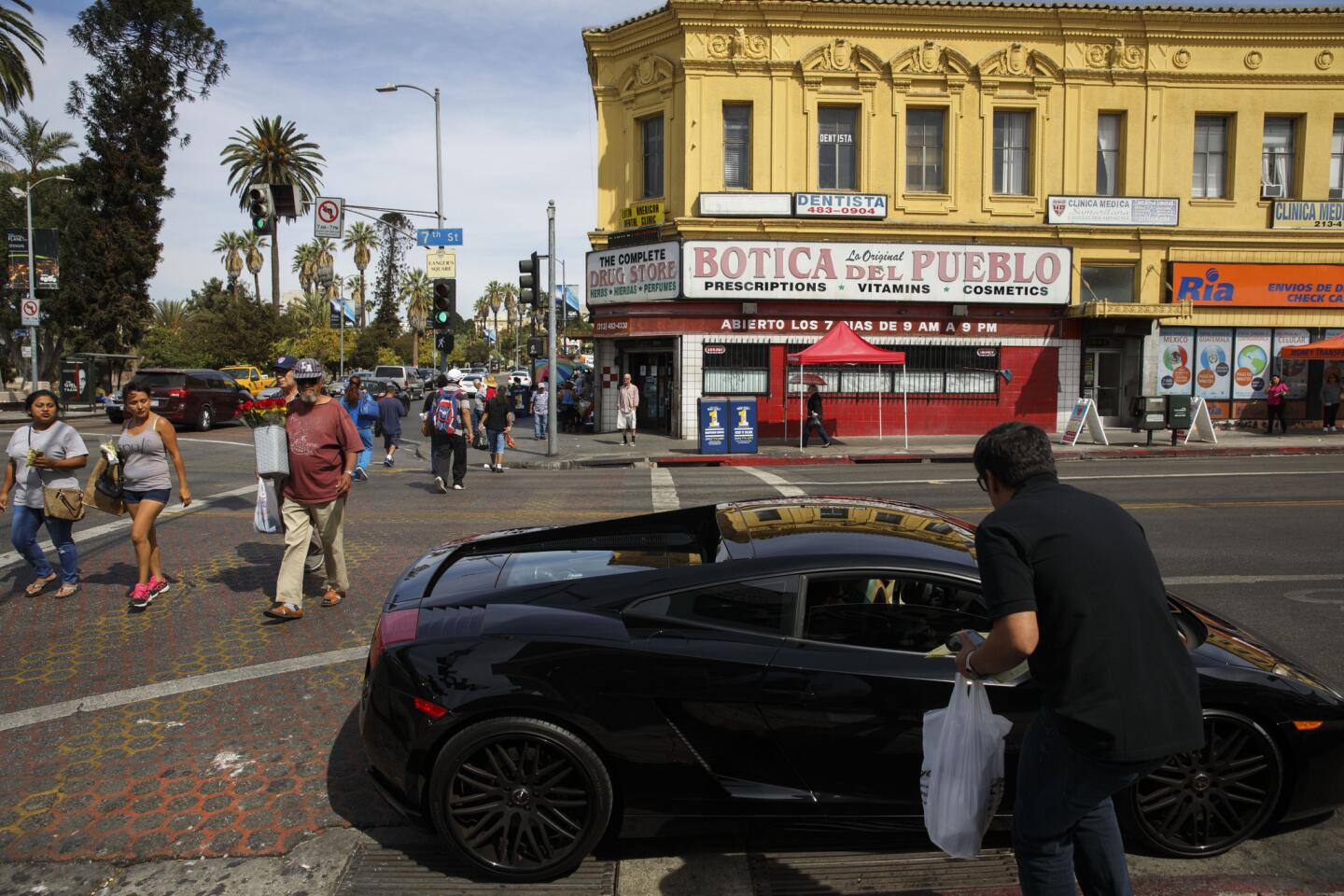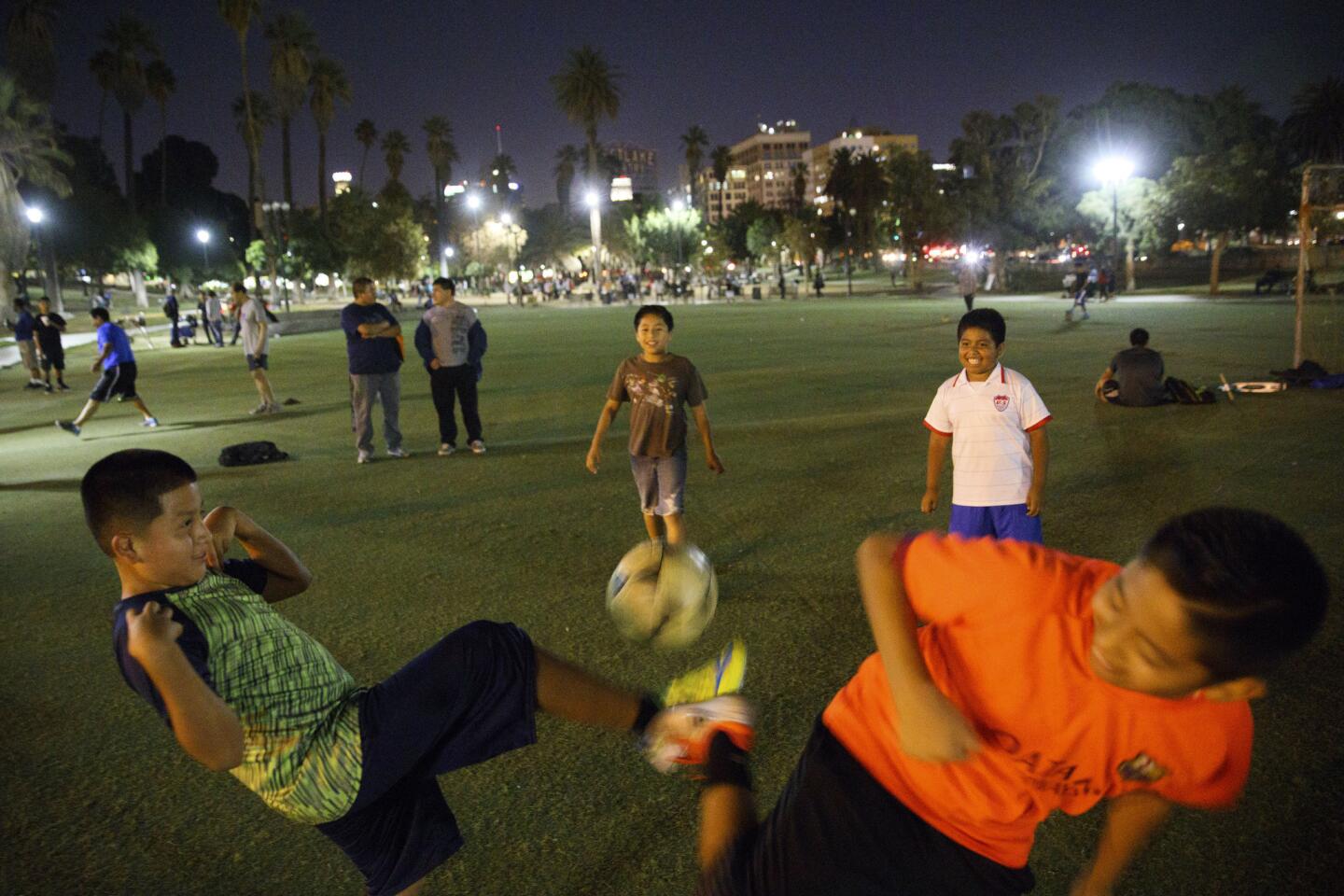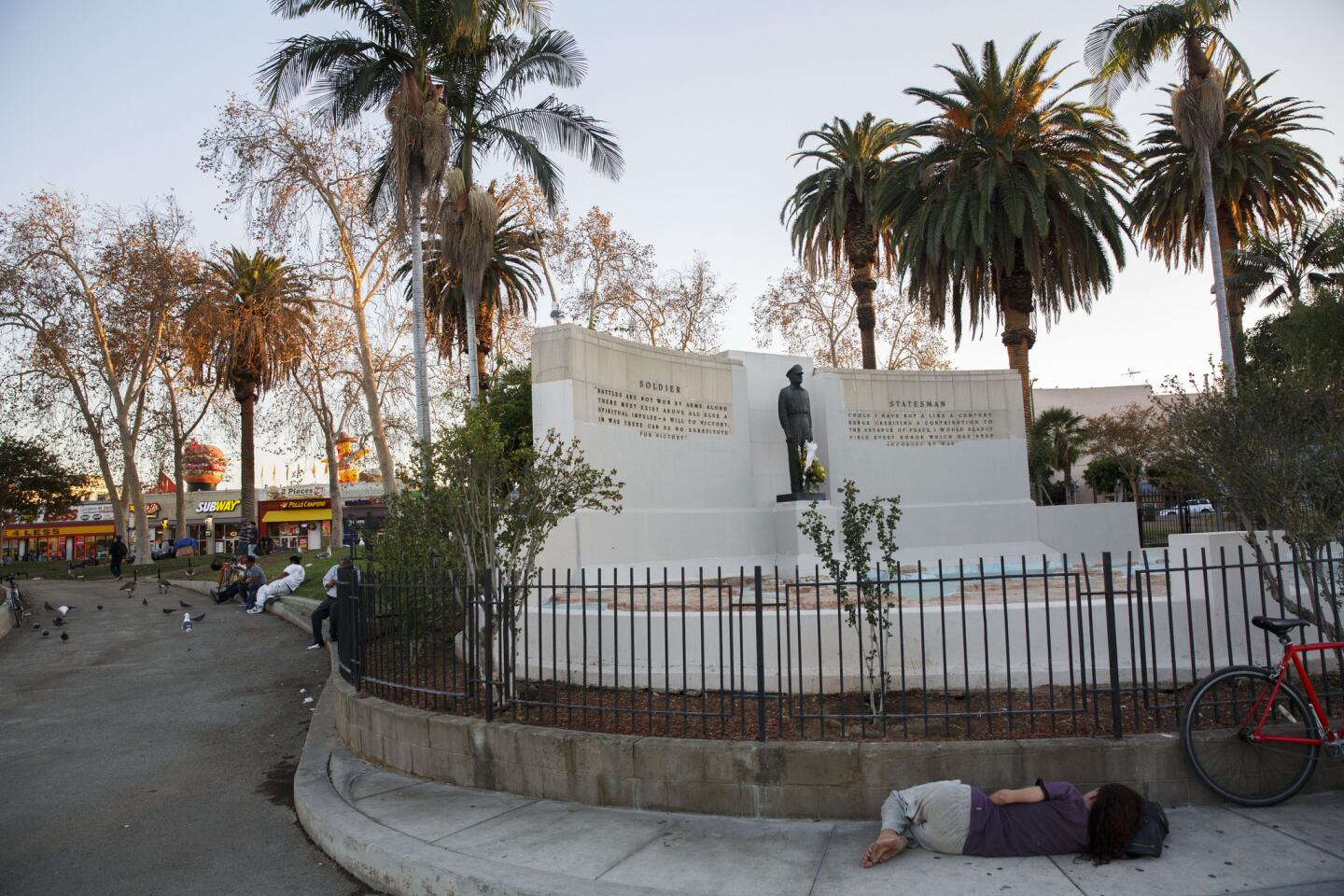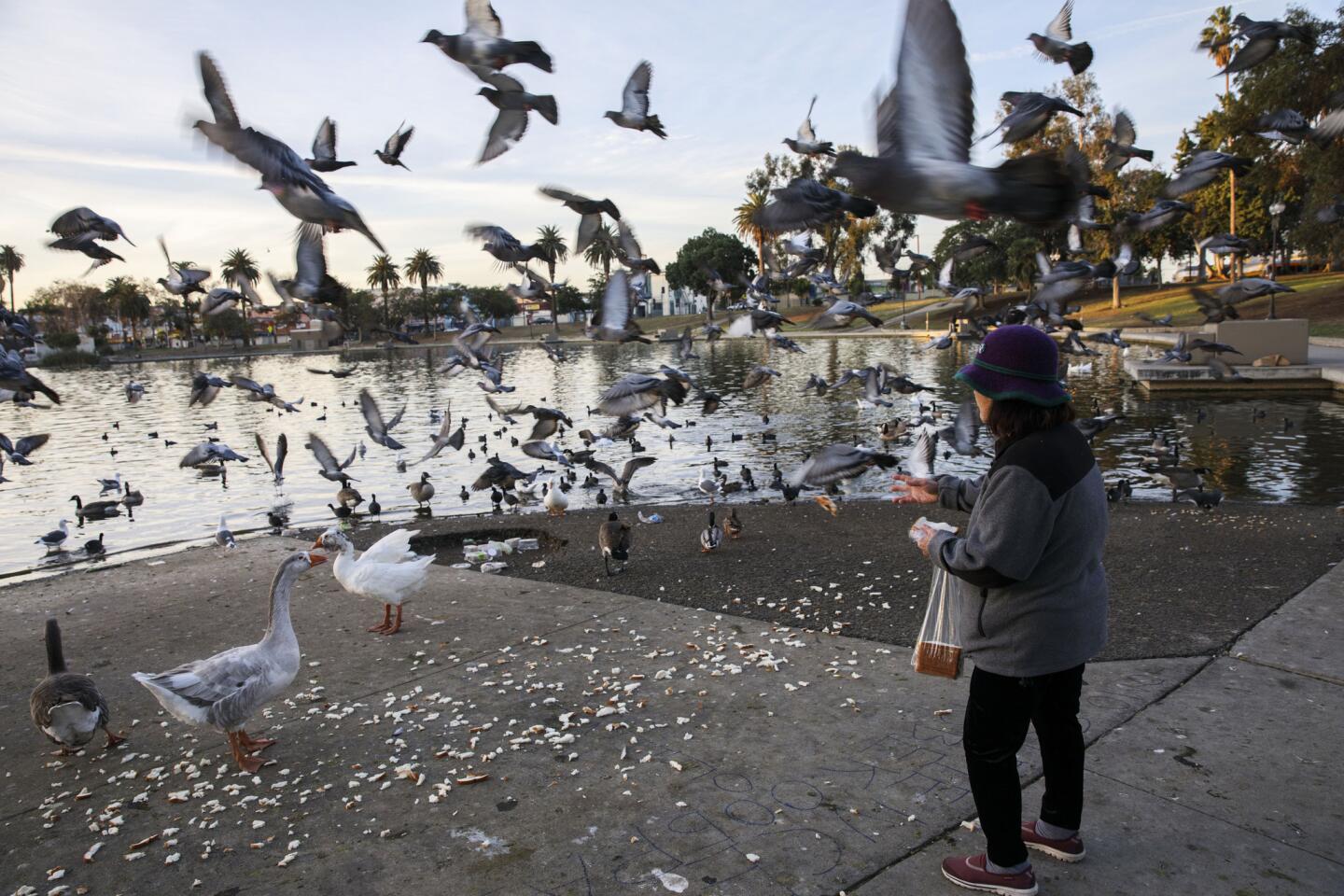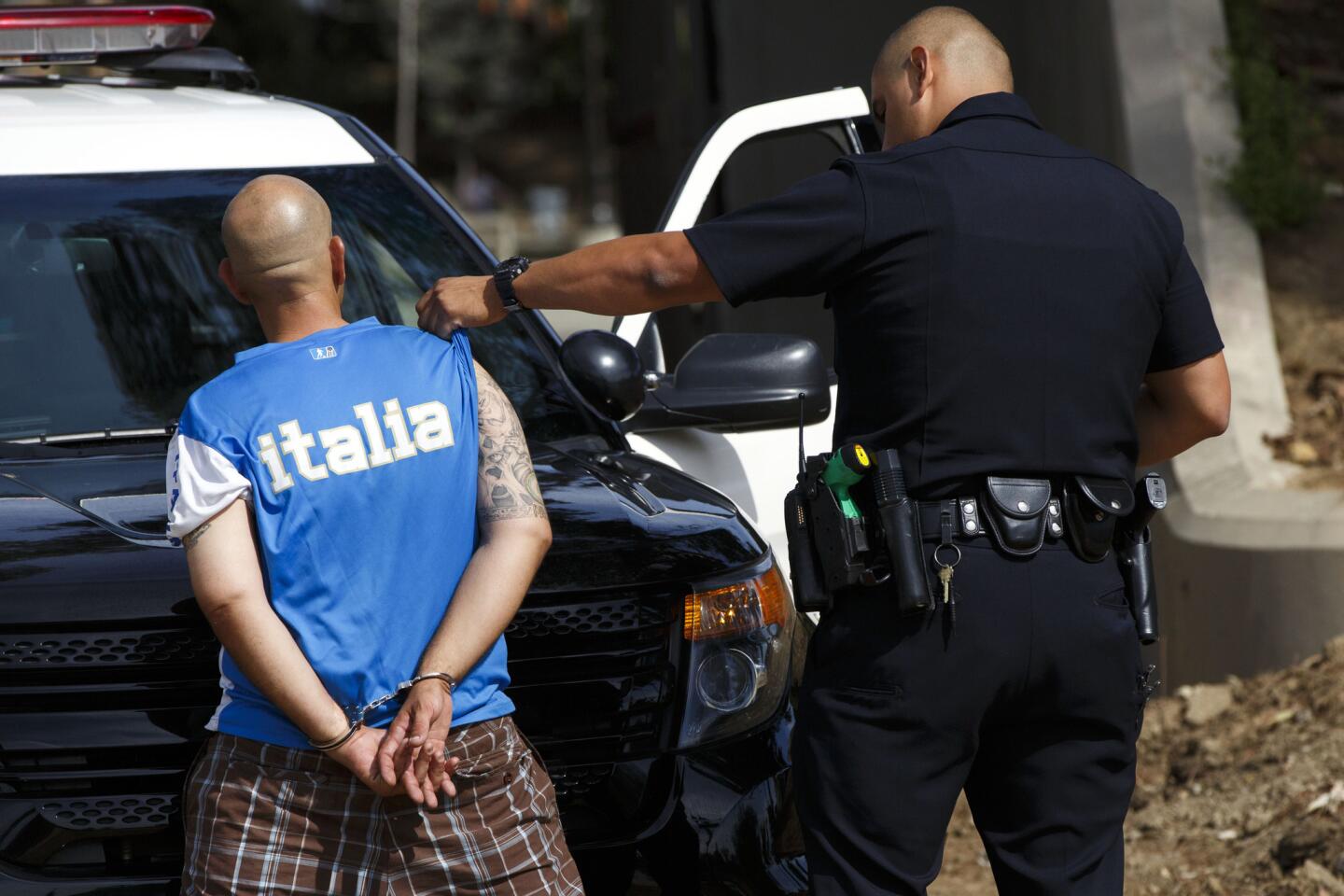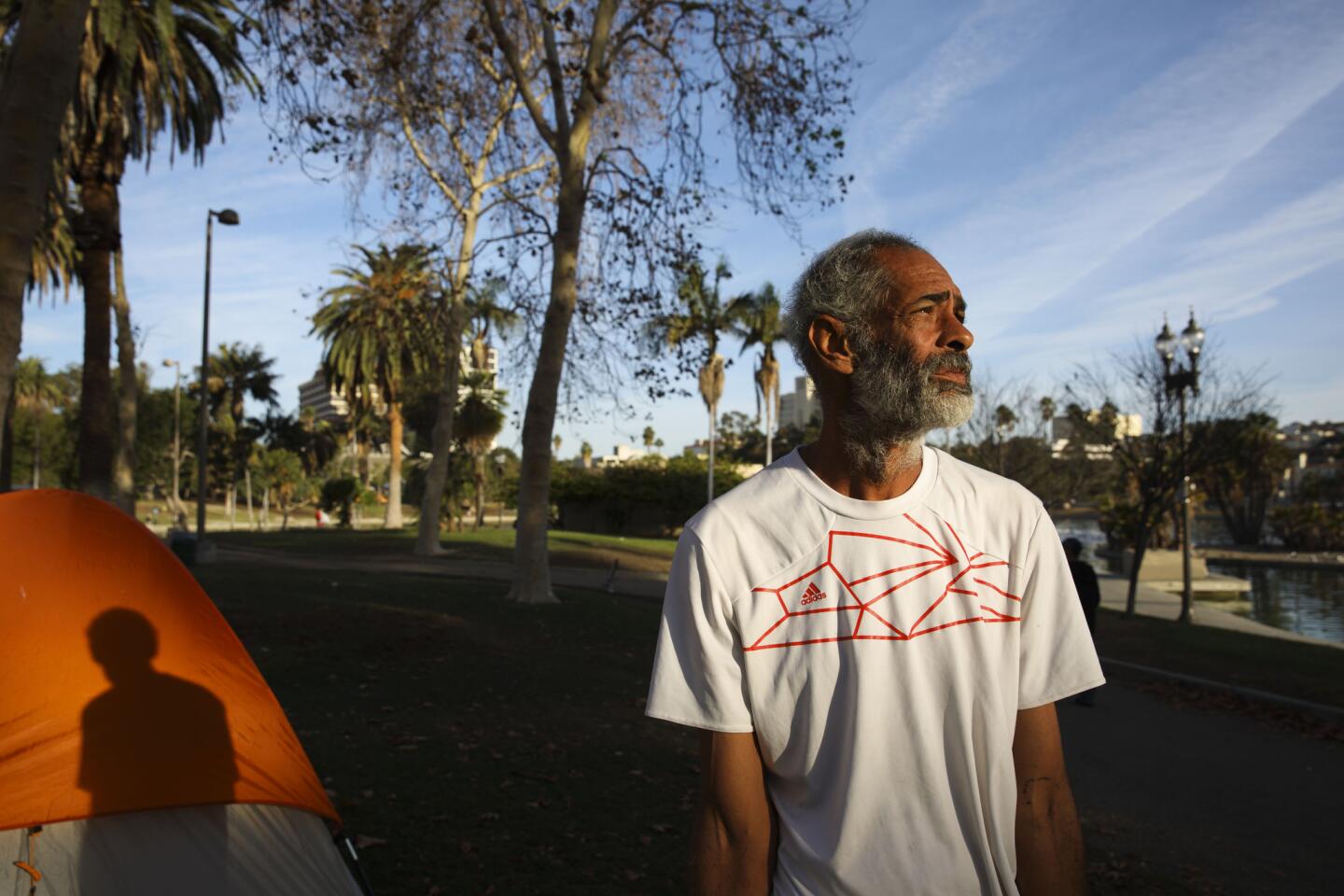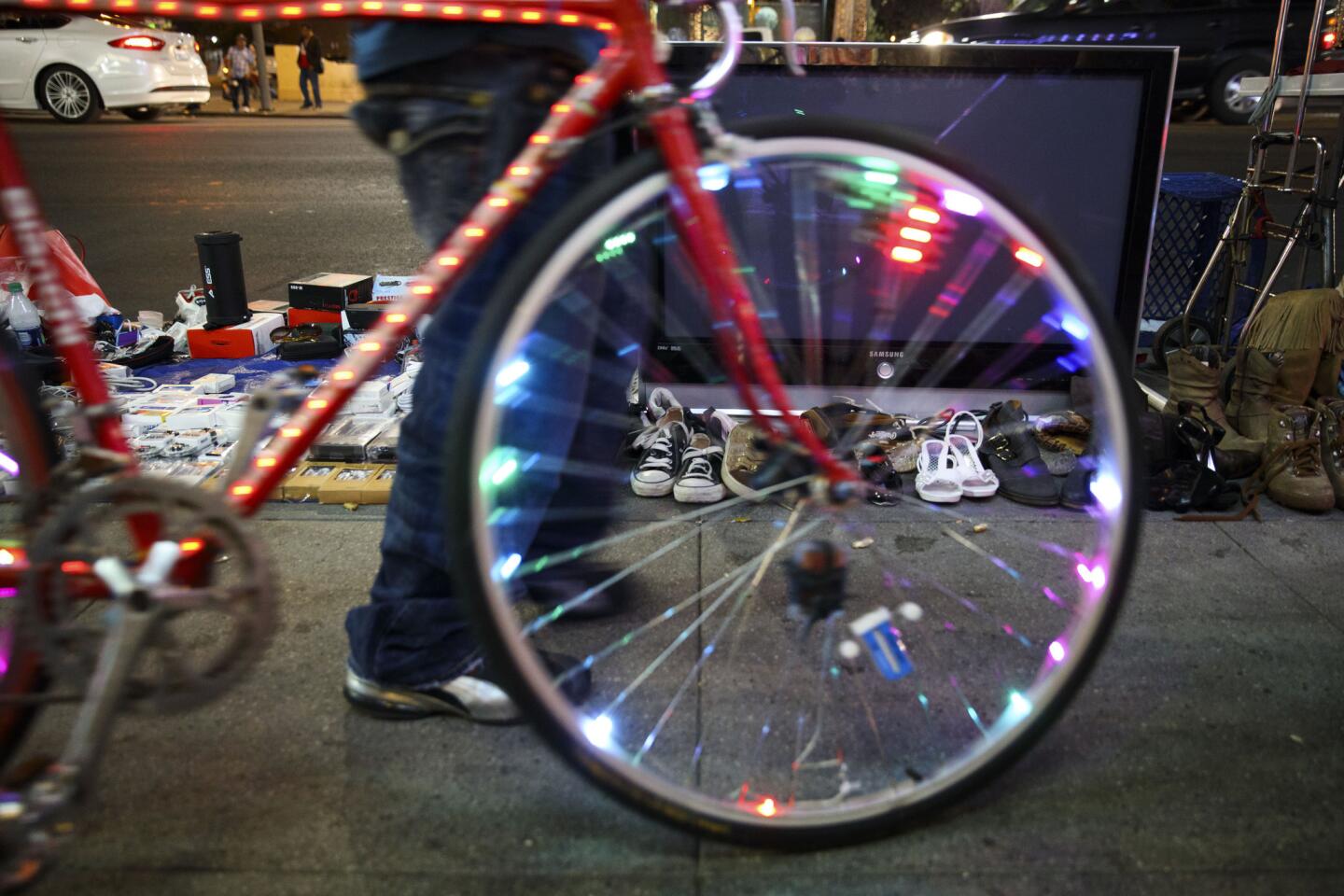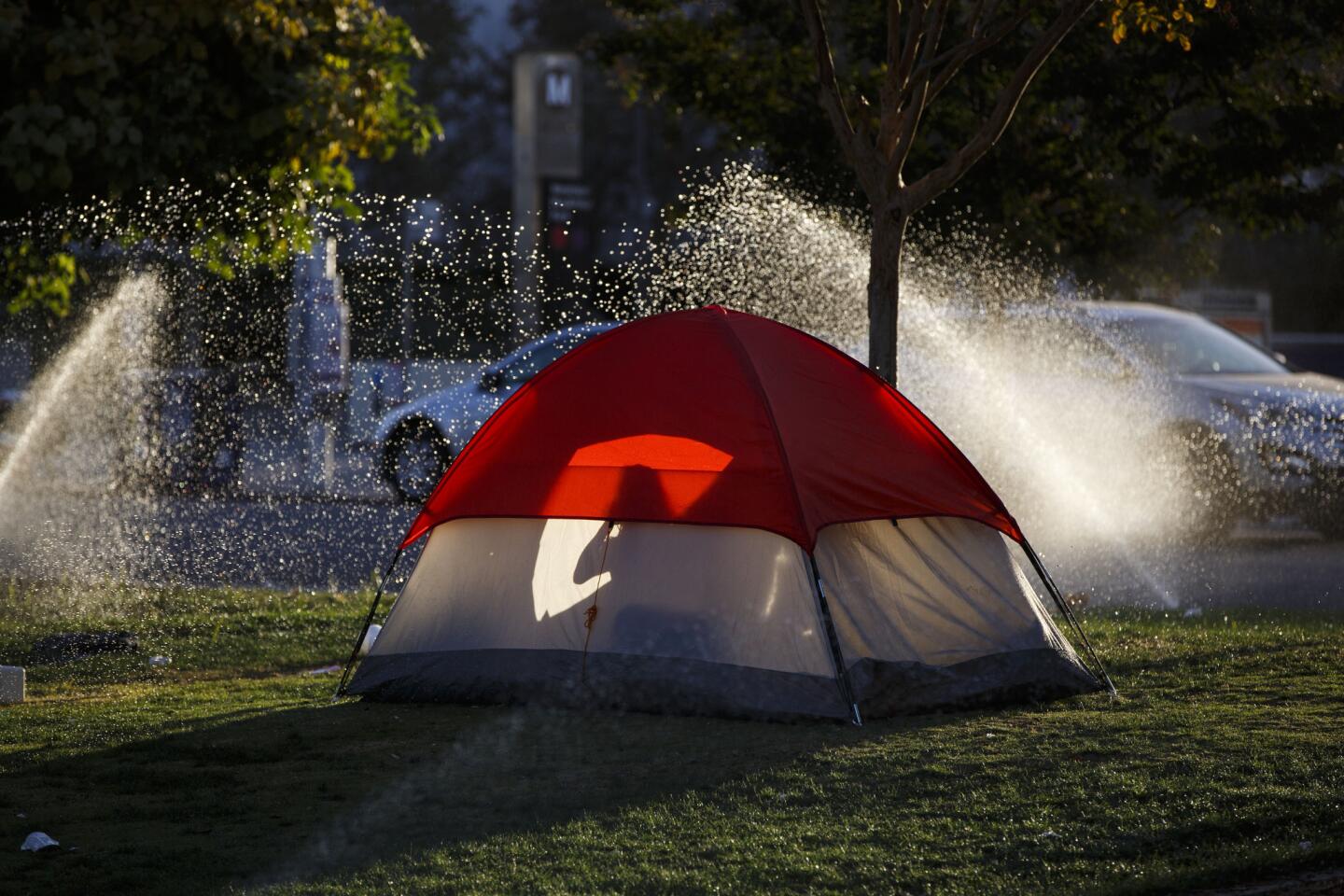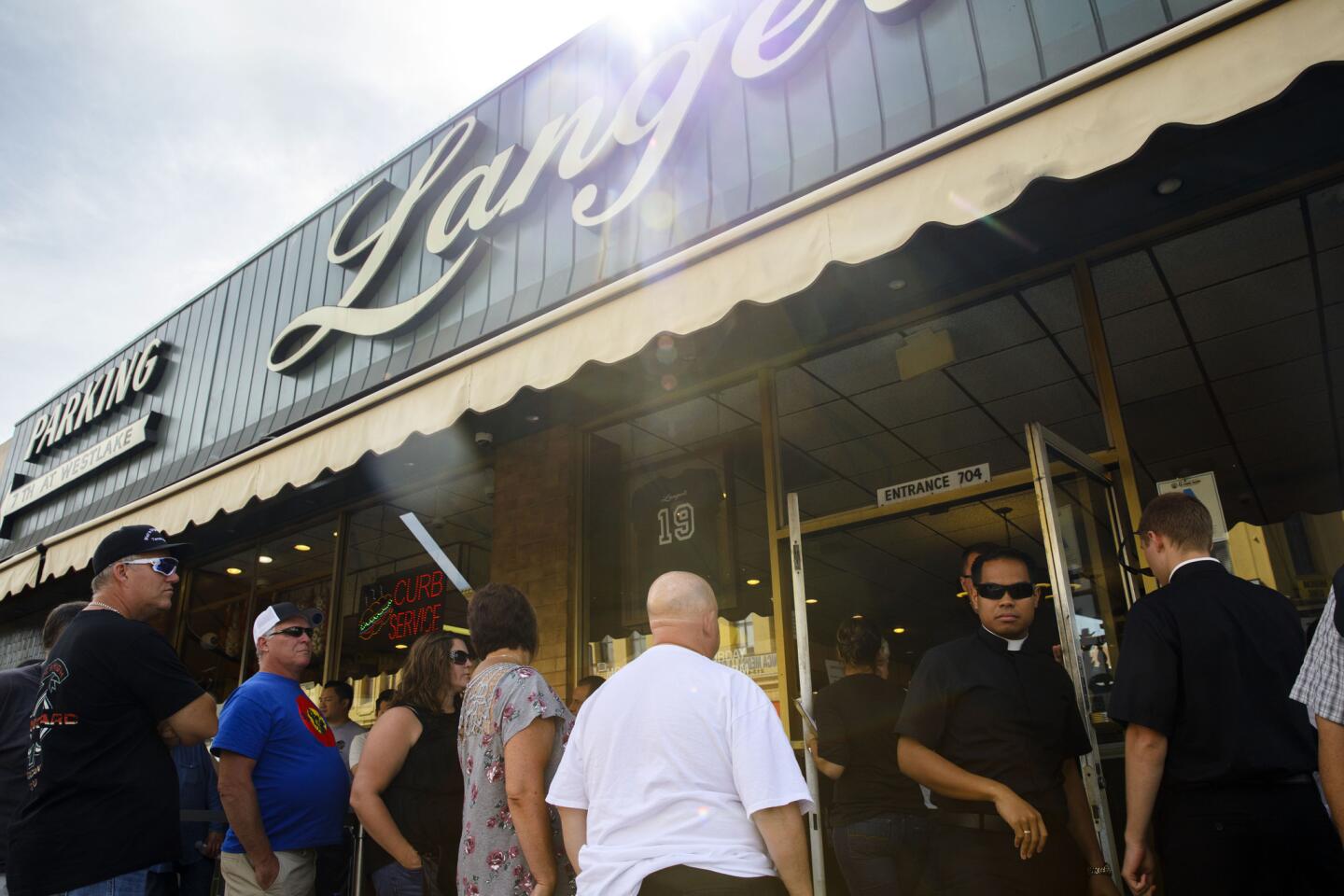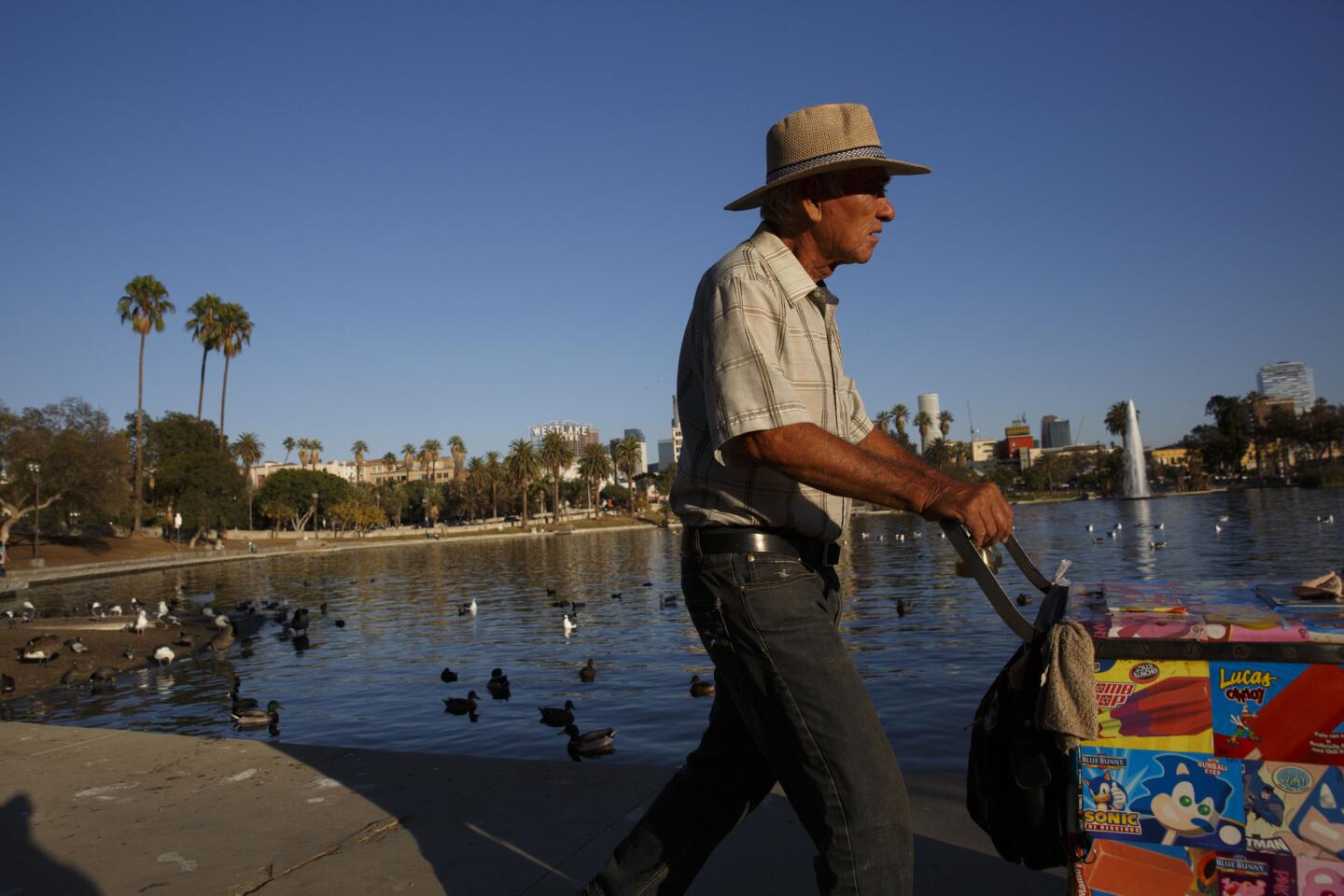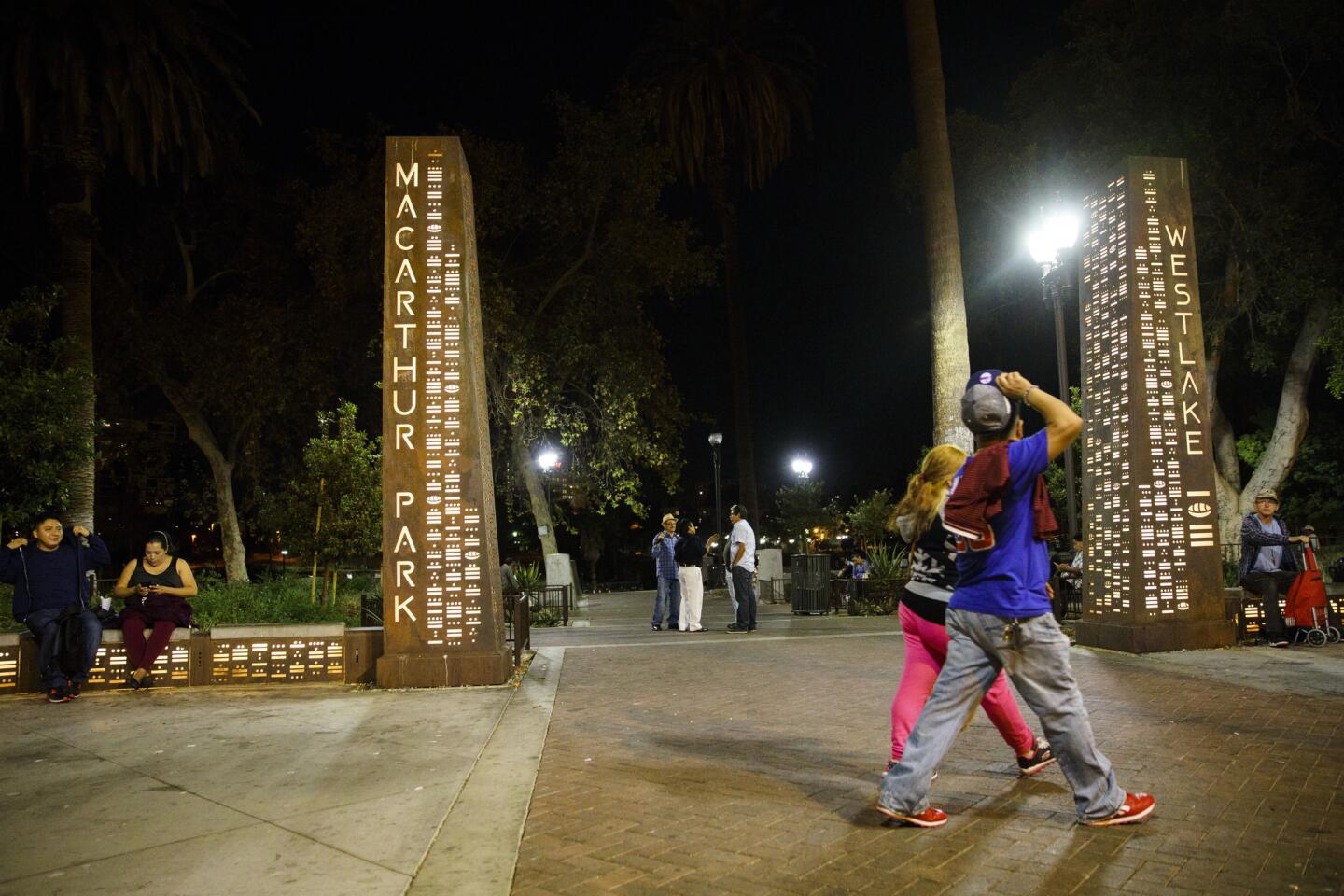‘All we do is clean and clean’: There are big plans for MacArthur Park, but residents are skeptical
- Share via
Veronica Jarquin likes to visit MacArthur Park every few days and let her 3-year-old run free on the playground.
On a recent morning, a man was smoking weed by the slide so they had to skip it and turn back home.
“It’s OK,” she told her daughter in a warm tone. “We’ll try again tomorrow.”
In the six years Jarquin, 33, has lived a few blocks from the park, she’s learned to tolerate the troubles that have long plagued this place. She holds her breath when the grass reeks of urine. She keeps her distance when police are making an arrest. She never goes near the yelling homeless men or their tents on Wilshire Boulevard.
Jarquin recently heard about big plans to clean up and renovate the park. Looking out at the stinky lake, she could hardly picture such a transformation.
“I just don’t know where they’ll start,” she said. “Or how they’ll ever finish.”
It’s a fair question for Councilman Gil Cedillo, who began representing the Westlake neighborhood in 2013. From day one, he talked about tackling the street trash problem.
Three years later, he said, he often asks himself: “Why isn’t it looking spiffy?”
“All we do is clean and clean,” he said. “But it’s like trying to push the waves back from the ocean.”
The immigrant neighborhood is one of the poorest in Los Angeles. It’s also among the most dense, with more than 100,000 people crammed into 3 square miles.
In an area full of crowded apartments, MacArthur Park offers something rare: 32 acres in which to gather and play.
Or throw trash, sell drugs, gamble, bathe, pitch a tent and live.
“It’s the kind of public space you have to stay on top of every day,” said Jose Gardea, who worked in the offices of two previous councilmen and has written a book about the park. “If you let go just a little bit, you lose control very quickly.”
Cedillo is developing an extensive plan for the park’s future, though it’s still in its early stages.
A $2.5-million renovation in 2008 brought in a popular artificial-turf soccer field, stadium lights, picnic tables and a children’s playground.
Cedillo would like to invest up to $20 million in the next few years. He wants to build a new boathouse and an outdoor classroom, renovate the entrances, add more areas for play and fitness, and update the restrooms.
This summer, his staff kicked off the planning process, gathering residents to piece together a park wish list. People requested school programs, piano lessons, fishing derbies, gardens and Zumba.
“We have to think big,” Cedillo said. “Otherwise, it’ll be nothing more than a Band-Aid.”
We have to think big. Otherwise, it’ll be nothing more than a Band-Aid.
— Councilman Gil Cedillo
So far, the city has $1.6 million in federal money set aside for the renovation. The rest, officials said, will need to be sought, project by project, from public and private sources.
And they say Cedillo’s $20-million plans will only go so far. More money will be needed to tackle top concerns like safety and homelessness. Stationing a park ranger at MacArthur, for example, would need to be covered by the city’s general fund.
Cedillo’s staff also has talked with local businesses about the possibility of launching a Westlake business improvement district that could pay to deploy private-security bike patrols.
On a recent afternoon, Los Angeles Police Department Senior Lead Officer Iris Santin, who has worked the area for almost 20 years, stood watch just north of the lake as a sanitation truck picked up the remains of a homeless encampment.
She had returned from a three-week vacation to find the grassy hills loaded with tarps, blankets, filthy clothes and makeshift stove tops.
“This is how it usually goes,” she said. “When I’m not around, things can get really bad.”
Santin grew up a few blocks from the park. She knows its ebbs and flows. The gang warfare and drug dealing that used to consume officers’ energies are long gone, she said, but patrol units still feel outnumbered.
At the park, their shifts revolve around robberies, aggravated assaults and thefts. They’re caught in a seemingly endless cycle with the homeless. They break down homeless camps, just to have them move across the street. They offer help with drug problems and shelter but usually are rejected.
A few years ago, when homelessness was starting to spread at the park, Cedillo partnered with outreach groups and began to provide services to the needy.
Every week, they give out blankets, food, medical help and toiletries.
Every week, Santin said, the homeless come back for more.
“They know by now, through word of mouth, that MacArthur Park is the place to be,” she said.
Hugo Ortiz, Cedillo’s field deputy for the area, said the office is aware their efforts may have been counterproductive and they may need to change their approach. One of the lead staffers, not long ago, was physically assaulted by a homeless man in the park restroom.
“Our ultimate goal is to provide services and help people get out of the park,” he said.
Cedillo believes he knows the solution to the neighborhood’s woes. It’s a twofold premise that to some may seem like an oxymoron: He wants to bring in more affordable housing and more residents with bigger incomes.
“We need a mix of people to come in and change the economics,” Cedillo said. “To create job development and break the concentration of marginalization.”
That’s a sensitive topic for a neighborhood that sits on prime land, at the cusp of gentrification, between the bustle of downtown and the coolness of Koreatown. Four years ago, before the homeless flocked to the park, hipsters and gourmet food trucks had begun to appear on its slopes.
Today, residents whose households make an average of $28,000 per year are doing what they can to fight home displacement. They attend community meetings to educate themselves about rent control and tenant rights and speak out against developments that don’t include affordable housing.
Margarita Lopez, president of the MacArthur Park Neighborhood Council, had to move out of the area a year ago because she couldn’t afford her studio’s rent, which rose over less than four years from $400 to $750. The housekeeper’s housing struggles motivated her to get involved in neighborhood politics.
“We know this is a gold mine,” she said of the neighborhood. “We’re not opposed to change, but we need the city to help us stay here to enjoy it.”
She worries a spruced-up park will pull in gentrifiers, but so far, she says, she’s pleased with how the park planning process is going.
See the most-read stories in Local News this hour »
Daniel Morales, who runs soccer programs at the park, attended Cedillo’s first vision planning meeting in August, along with about 60 community members.
“They didn’t come in with a microphone and say, ‘This is how things will look,’” he said. “They asked, ‘What does the community want?’ and they listened to us. They know people have a voice and it needs to be included.”
Back on the playground, Maria Garcia, 32, was too busy chasing her 2 ½-year-old son to give much thought to the park’s future. Coconut juice dripped down his chin onto his tennis shoe. “Please,” she told him. “Stand still for a minute.”
The Guatemalan immigrant hopes that years from now, when her boy is old enough to walk the park alone, the neighborhood will be a much safer place.
“I want to be home and not worry,” she said. “I want to trust that he’s going to be OK out here without me.”
esmeralda.bermudez@latimes.com
Twitter: @LATBermudez
To read the article in Spanish, click here
ALSO
What do we do with the Silver Lake reservoirs?
Editorial: To thrive, people need space to breathe, walk and play. Vote yes on Measure A for parks
Anaheim ignores Angels’ objections and goes ahead with major development near stadium
More to Read
Sign up for Essential California
The most important California stories and recommendations in your inbox every morning.
You may occasionally receive promotional content from the Los Angeles Times.
